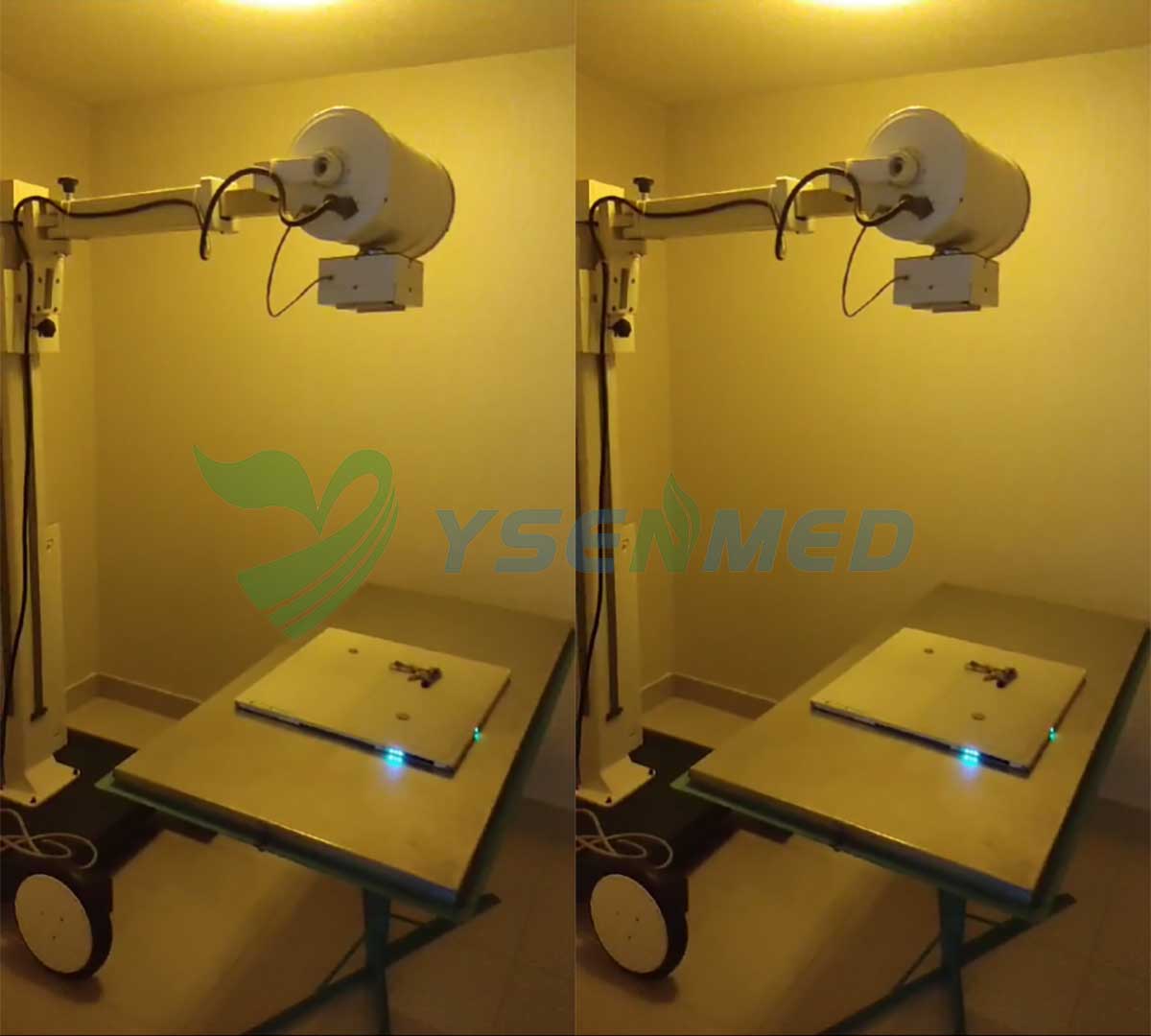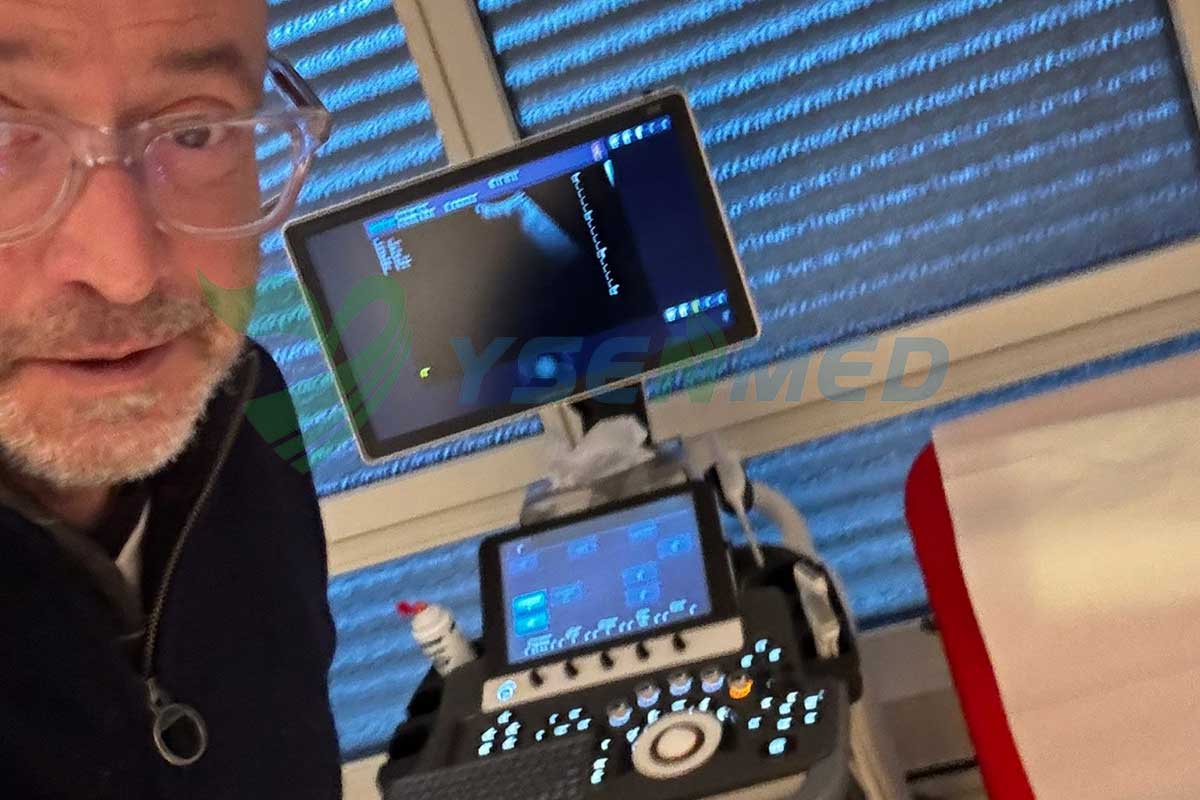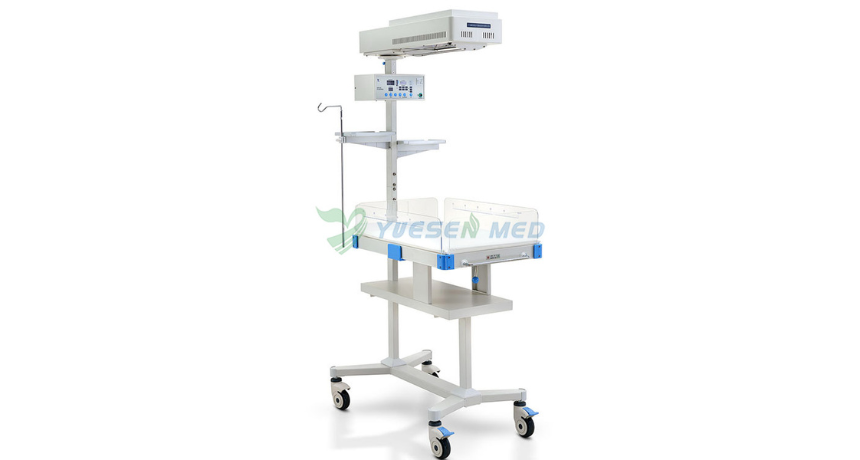Hot Products
YSX500D 50kW DR system set up and put into service in Cambodia.
YSENMED YSX500D 50kW digital x-ray system has been successfully set up and put into service in a hospital in Cambodia.
YSX056-PE serving as a vehicle-mounted x-ray in the Philippines
YSX056-PE 5.6kW portable x-ray unit has been adapted to fit on a truck, to provide mobile x-ray examination service for remote communities in the Philippines.
X Ray Machine To Zimbabwe
x ray machine, 50KW x ray machine
Microscope To Malawi
Achromatic objectives: 4X、10X、40X(S), 100X(S、Oil) Wide field eyepiece: WF10X(WF16X for option) Eyepiece head: Sliding binocular head inclined at 45° Stage: Double layer mechanical stage size 140X140mm, moving range 75X45mm Focusing: Coaxial coarse and
Guardian of Tiny Hearts: The Portable Pediatric Pulse Oximeter
Views : 1908
Update time : 2023-09-30 16:59:00
In a world filled with technological marvels, there's one humble device that stands out as a guardian of tiny hearts - the Portable Pediatric Pulse Oximeter. This unassuming gadget plays a crucial role in monitoring the health and well-being of our little ones, ensuring their tiny hearts keep beating strong. In this article, we will delve into the world of these life-saving devices, exploring what they are, how they work, and why they are an essential tool for parents and healthcare providers. Let's embark on this journey to discover the significance of the Portable Pediatric Pulse Oximeter.
Introduction to Pediatric Pulse Oximeters
A pediatric pulse oximeter is a small, handheld device designed specifically for children. It measures two essential parameters - oxygen saturation levels in the blood (SpO2) and heart rate. This information is crucial for assessing a child's respiratory and circulatory health. These oximeters are compact, lightweight, and easy to use, making them ideal for both healthcare professionals and parents.
How Does a Pediatric Pulse Oximeter Work?
Now, let's uncover the inner workings of this remarkable device. How does a pediatric pulse oximeter measure SpO2 and heart rate with such accuracy?
The device employs a simple but effective principle. It emits two types of light through the child's skin: red and infrared. These lights pass through the tiny blood vessels, and a sensor on the opposite side detects how much light makes it through. By analyzing the amount of light absorbed by oxygenated and deoxygenated blood, the oximeter calculates the SpO2 level. Simultaneously, it tracks the pulsatile flow of blood, which allows it to determine the heart rate.
Why Are Pediatric Pulse Oximeters Essential for Children?
Now, you might be wondering why these devices are so essential, especially for our little ones.
Children, especially infants and toddlers, have developing respiratory and circulatory systems. They can experience sudden drops in oxygen levels or changes in heart rate, which might go unnoticed without monitoring. Pediatric pulse oximeters act as early warning systems, alerting parents and healthcare providers to any potential issues. This early detection can be a lifesaver in cases of respiratory infections, congenital heart conditions, or other health concerns.
Choosing the Right Pediatric Pulse Oximeter
When it comes to selecting the right pediatric pulse oximeter for your child, there are a few key factors to consider:
- Size and Design: Ensure that the oximeter is designed for pediatric use and is comfortable for your child.
- Accuracy: Look for a device that provides accurate and reliable readings.
- Display: Check if the screen is easy to read and understand.
- Battery Life: Consider how long the device can operate on a single set of batteries.
- Durability: Children can be quite active, so choose a sturdy oximeter that can withstand some rough handling.
Using a Pediatric Pulse Oximeter: A Step-by-Step Guide
Using a pediatric pulse oximeter is a straightforward process:
1. Prepare the Child: Make sure the child is calm and still, preferably in a seated or resting position.
2. Place the Oximeter: Gently attach the oximeter to the child's finger or toe, following the manufacturer's instructions.
3. Wait for Readings: Within seconds, the device will display the SpO2 level and heart rate.
4. Take Action: If the readings fall outside the normal range, consult a healthcare professional for guidance.
Common Misconceptions About Pediatric Pulse Oximetry
There are a few misconceptions surrounding pediatric pulse oximetry that we should address:
- It's Painful: The oximeter's sensor is painless and non-invasive; children usually don't even notice it's there.
- Only for Sick Children: While it's crucial for sick children, pediatric pulse oximeters are also valuable for monitoring healthy children, especially during sleep or physical activity.
- It's Complicated: These devices are designed to be user-friendly and straightforward.
Advancements in Pediatric Pulse Oximeter Technology
The world of medical technology is ever-evolving, and pediatric pulse oximeters are no exception. Recent advancements have made them even more user-friendly and accurate. Some now come with smartphone apps, allowing parents to track their child's health over time.
The Role of Pediatric Pulse Oximeters in Telemedicine
In an era where telemedicine is gaining prominence, pediatric pulse oximeters have found a new role. Healthcare providers can remotely monitor a child's vital signs, providing timely advice and intervention when needed. This is particularly valuable for families in remote areas or those who find it challenging to access healthcare facilities.
Maintaining and Caring for Your Pediatric Pulse Oximeter
To ensure your pediatric pulse oximeter continues to provide accurate readings, follow these maintenance tips:
- Regular Cleaning: Clean the device as per the manufacturer's instructions, usually with a soft, damp cloth.
- Battery Replacement: Replace batteries promptly to avoid unexpected shutdowns.
- Calibration: Some oximeters may require periodic calibration; follow the provided guidelines.
Real-Life Stories: How Pediatric Pulse Oximeters Saved Lives
Let's explore some real-life stories where pediatric pulse oximeters played a pivotal role in safeguarding tiny hearts:
1. A Timely Diagnosis: Sarah, a vigilant mother, noticed her infant's SpO2 levels dropping during sleep. Thanks to the oximeter, she sought medical attention promptly, and her child was diagnosed with sleep apnea and received treatment.
2. Peace of Mind: David, a father of twins born prematurely, used pediatric pulse oximeters to monitor his babies' health at home. This gave him peace of mind and helped him detect any issues early.
3. Remote Monitoring: In rural areas with limited access to healthcare, pediatric pulse oximeters, coupled with telemedicine, have saved countless lives by allowing doctors to monitor children from a distance.
4. Post-Surgery Monitoring: After heart surgery, young patients are monitored with pulse oximeters in the recovery room, ensuring a smooth transition to normalcy.
5. Sports and Activities: Pediatric pulse oximeters are not only for sick children. They also help parents ensure their active kids are safe during sports and physical activities.
In conclusion, the Portable Pediatric Pulse Oximeter is a guardian of tiny hearts, offering a simple yet powerful way to monitor the health.
Introduction to Pediatric Pulse Oximeters
A pediatric pulse oximeter is a small, handheld device designed specifically for children. It measures two essential parameters - oxygen saturation levels in the blood (SpO2) and heart rate. This information is crucial for assessing a child's respiratory and circulatory health. These oximeters are compact, lightweight, and easy to use, making them ideal for both healthcare professionals and parents.
How Does a Pediatric Pulse Oximeter Work?
Now, let's uncover the inner workings of this remarkable device. How does a pediatric pulse oximeter measure SpO2 and heart rate with such accuracy?
The device employs a simple but effective principle. It emits two types of light through the child's skin: red and infrared. These lights pass through the tiny blood vessels, and a sensor on the opposite side detects how much light makes it through. By analyzing the amount of light absorbed by oxygenated and deoxygenated blood, the oximeter calculates the SpO2 level. Simultaneously, it tracks the pulsatile flow of blood, which allows it to determine the heart rate.
Why Are Pediatric Pulse Oximeters Essential for Children?
Now, you might be wondering why these devices are so essential, especially for our little ones.
Children, especially infants and toddlers, have developing respiratory and circulatory systems. They can experience sudden drops in oxygen levels or changes in heart rate, which might go unnoticed without monitoring. Pediatric pulse oximeters act as early warning systems, alerting parents and healthcare providers to any potential issues. This early detection can be a lifesaver in cases of respiratory infections, congenital heart conditions, or other health concerns.
Choosing the Right Pediatric Pulse Oximeter
When it comes to selecting the right pediatric pulse oximeter for your child, there are a few key factors to consider:
- Size and Design: Ensure that the oximeter is designed for pediatric use and is comfortable for your child.
- Accuracy: Look for a device that provides accurate and reliable readings.
- Display: Check if the screen is easy to read and understand.
- Battery Life: Consider how long the device can operate on a single set of batteries.
- Durability: Children can be quite active, so choose a sturdy oximeter that can withstand some rough handling.
Using a Pediatric Pulse Oximeter: A Step-by-Step Guide
Using a pediatric pulse oximeter is a straightforward process:
1. Prepare the Child: Make sure the child is calm and still, preferably in a seated or resting position.
2. Place the Oximeter: Gently attach the oximeter to the child's finger or toe, following the manufacturer's instructions.
3. Wait for Readings: Within seconds, the device will display the SpO2 level and heart rate.
4. Take Action: If the readings fall outside the normal range, consult a healthcare professional for guidance.
Common Misconceptions About Pediatric Pulse Oximetry
There are a few misconceptions surrounding pediatric pulse oximetry that we should address:
- It's Painful: The oximeter's sensor is painless and non-invasive; children usually don't even notice it's there.
- Only for Sick Children: While it's crucial for sick children, pediatric pulse oximeters are also valuable for monitoring healthy children, especially during sleep or physical activity.
- It's Complicated: These devices are designed to be user-friendly and straightforward.
Advancements in Pediatric Pulse Oximeter Technology
The world of medical technology is ever-evolving, and pediatric pulse oximeters are no exception. Recent advancements have made them even more user-friendly and accurate. Some now come with smartphone apps, allowing parents to track their child's health over time.
The Role of Pediatric Pulse Oximeters in Telemedicine
In an era where telemedicine is gaining prominence, pediatric pulse oximeters have found a new role. Healthcare providers can remotely monitor a child's vital signs, providing timely advice and intervention when needed. This is particularly valuable for families in remote areas or those who find it challenging to access healthcare facilities.
Maintaining and Caring for Your Pediatric Pulse Oximeter
To ensure your pediatric pulse oximeter continues to provide accurate readings, follow these maintenance tips:
- Regular Cleaning: Clean the device as per the manufacturer's instructions, usually with a soft, damp cloth.
- Battery Replacement: Replace batteries promptly to avoid unexpected shutdowns.
- Calibration: Some oximeters may require periodic calibration; follow the provided guidelines.
Real-Life Stories: How Pediatric Pulse Oximeters Saved Lives
Let's explore some real-life stories where pediatric pulse oximeters played a pivotal role in safeguarding tiny hearts:
1. A Timely Diagnosis: Sarah, a vigilant mother, noticed her infant's SpO2 levels dropping during sleep. Thanks to the oximeter, she sought medical attention promptly, and her child was diagnosed with sleep apnea and received treatment.
2. Peace of Mind: David, a father of twins born prematurely, used pediatric pulse oximeters to monitor his babies' health at home. This gave him peace of mind and helped him detect any issues early.
3. Remote Monitoring: In rural areas with limited access to healthcare, pediatric pulse oximeters, coupled with telemedicine, have saved countless lives by allowing doctors to monitor children from a distance.
4. Post-Surgery Monitoring: After heart surgery, young patients are monitored with pulse oximeters in the recovery room, ensuring a smooth transition to normalcy.
5. Sports and Activities: Pediatric pulse oximeters are not only for sick children. They also help parents ensure their active kids are safe during sports and physical activities.
In conclusion, the Portable Pediatric Pulse Oximeter is a guardian of tiny hearts, offering a simple yet powerful way to monitor the health.
Related News
Read More >>
 YSFPD-M1717V VET flat panel detector helps digitize the x-ray in a Peruvian vet clinic
YSFPD-M1717V VET flat panel detector helps digitize the x-ray in a Peruvian vet clinic
Apr .30.2025
With the professional after-sales assistance from YSENMED team, Peruvian vet has managed to upgrade his mobile analog x-ray system with YSFPD-M1717V VET wilress flat panel detector and the images come out clear and highly satisfactory.
 The well functioning SonoScape S50 ultrasound system makes Dr. Roger happy
The well functioning SonoScape S50 ultrasound system makes Dr. Roger happy
Apr .29.2025
Dr. Roger is so excited to receive the SonoScape S50 color doppler ultrasound system, and he can't wait to put it into practice.
 Why Do Babies Need Infant Radiant Warmers?
Why Do Babies Need Infant Radiant Warmers?
Apr .26.2025
One crucial piece of equipment in neonatal care is the infant radiant warmer. But why exactly do babies need these warmers? Let's dive into the world of infant care and explore this important topic.
 Introduction video of YSENMED YSDEN-302S Mobile Dental Chair Unit.
Introduction video of YSENMED YSDEN-302S Mobile Dental Chair Unit.
Apr .22.2025
Here we share the introduction video of YSENMED YSDEN-302S Mobile Dental Chair Unit.



